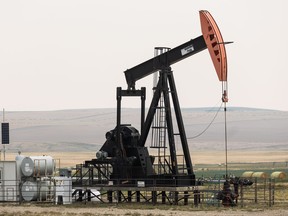OTTAWA — The Canadian economy showed a nuanced performance in the first two months of 2022. April’s data revealed growth, while May presented a more concerning picture. This analysis delves into the key factors influencing these months’ economic landscapes.
April: Positive Economic Growth
In April, Canada experienced an economy-wide increase of 0.3%, aligning with analyst forecasts. The sectoral performance highlighted significant contributions from the oil and gas industry, which saw a remarkable rise of 3.9%—the highest since September 2020. This growth was driven by a surge in activity across various sectors, including mining, where potash production expanded notably.
Additional sectors showed mixed trends: accommodations and food services reported a rebound, indicating resilience despite broader challenges. However, the real estate sector faced a contraction of 15%, reflecting a challenging market environment.
May: Likely Contraction
While April marked a positive note, May’s data suggested potentialcontraction. Flash estimates indicated a possible decline in GDP for that month, attributed to lower oil output from regular maintenance shutdowns. This downturn underscores the delicate balance between industry activities and external economic factors.
Sectoral Insights
Oil and Gas: A Strong Performance
The oil and gas sector emerged as a key driver of April’s growth, with a notable increase of 3.9%. This contribution highlighted the sector’s critical role in Canada’s economy during this period.
Mining: Robust Growth
Mining activity showed resilience, particularly in potash production, which expanded significantly. This sector’s stability adds to Canada’s industrial strength and economic diversity.
Accommodations and Food Services: Recovery Signs
Despite broader challenges, accommodations and food services experienced a rebound, indicating a stabilizing economy in certain sectors.
Real Estate: A Significant Setback
The real estate sector faced a significant contraction of 15%. This downturn reflects broader economic pressures, particularly in housing markets where demand struggled to meet supply.
Broad Market Dynamics
Canadian Dollar: Impact of Recent Data
The Canadian dollar was influenced by the release of mixed economic data for May. Its exchange rate slightly declined due to market reactions to the latest economic trends and potential global instability concerns.
Economic Context: Outlook and Implications
Global and Domestic Factors
The resilience of Canada’s economy in April against broader challenges suggests adaptability, though May’s contraction raises questions about sustainability. The sectoral breakdowns highlight vulnerabilities, particularly in key areas like real estate.
Earnings and Employment Trends
Earnings per employee and per hour rose marginally in April, indicating labor productivity gains. Unemployment claims remained subdued, reflecting a strong job market despite overall economic growth.
Conclusion
Canada’s economic performance in 2022 thus far presents an interesting mix of positive signs from certain sectors against broader challenges. The resilience of the oil and gas industry, alongside mining contributions, offers a foundation for stability, while the real estate sector’s contraction signals potential risks moving forward. The overall picture underscores Canada’s ability to navigate economic fluctuations through sectoral diversification and adaptability.
This analysis provides a detailed snapshot of Canada’s economic health in April and May 2022, emphasizing key sectors and broader market dynamics.











